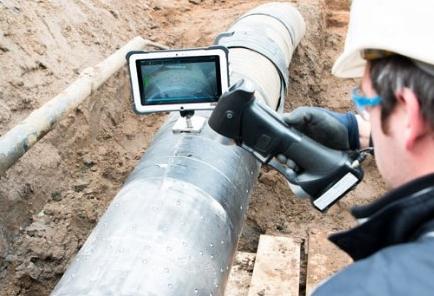The Future of Pipeline Inspection: Drones, Robots, and AI

The backbone of our modern world relies on a silent network – pipelines. These vital arteries carry oil, gas, and other resources across vast distances, keeping our industries humming and our homes warm. But ensuring their integrity is a constant challenge. Traditional inspection methods are often time-consuming, expensive, and even risky. However, the future of pipeline inspection is bright, with a powerful trio emerging to revolutionize the process: drones, robots, and artificial intelligence (AI).
Drones: Taking Inspection to New Heights
Imagine a silent guardian soaring over a pipeline, its watchful eye capturing high-resolution images and videos. This is the reality of drone-based pipeline inspection. Drones can:
Reach Difficult Terrain: Rugged mountains, dense forests, or swampy areas – no problem for drones. They can navigate these challenging landscapes with ease, inspecting pipelines that were previously difficult or even impossible to access.
Enhanced Efficiency: Drones cover large distances quickly, significantly reducing inspection times compared to traditional ground-based methods. This translates to cost savings and less disruption to operations.
Improved Safety: Drones eliminate the need for personnel to be in close proximity to pipelines, reducing the risk of accidents and injuries.
Robots: Diving Deep for a Detailed Look
Not all pipelines run neatly above ground. Many critical pipelines snake their way underground or even underwater. This is where robots come in. These specialized machines can:
Internal Inspections: Unlike drones, robots can navigate the interior of pipelines, providing a detailed look at the pipe walls for signs of corrosion, cracks, or other potential threats.
Underwater Operations: Remotely operated vehicles (ROVs) can be deployed for underwater pipeline inspections. These robots can withstand the pressure and navigate murky waters, ensuring the integrity of subsea pipelines.
Data Collection: Advanced robots are equipped with sophisticated sensors that gather valuable data on the pipeline's condition, thickness, and any potential anomalies.
AI: The Seeing Eye of Pipeline Inspection
The data collected by drones and robots becomes even more powerful when combined with AI. Here's how AI is transforming pipeline inspection:
Automated Analysis: AI algorithms can analyze the vast amount of visual data collected by drones and robots, identifying potential issues with high accuracy and speed. This frees up human inspectors to focus on complex tasks and decision-making.
Predictive Maintenance: By analyzing historical data and current inspection results, AI can predict potential problems before they occur. This allows for proactive maintenance, preventing costly downtime and potential environmental damage.
Improved Decision-Making: AI can provide real-time insights and recommendations to inspectors, helping them prioritize repairs and optimize resource allocation.
The Future is a Collaborative Effort
Drones, robots, and AI aren't meant to replace traditional inspection methods entirely. The future lies in a collaborative approach, where each technology plays to its strengths. Human expertise remains crucial for interpreting data, making final decisions, and ensuring the overall effectiveness of the inspection process.
Conclusion: A Brighter Future for Pipelines
The future of pipeline inspection is taking flight (with drones), diving deep (with robots), and seeing clearly (with AI). This powerful combination promises to revolutionize the way we maintain these vital infrastructure assets, ensuring their safety, efficiency, and environmental sustainability for years to come. As these technologies continue to evolve, we can expect even more exciting advancements in the pipeline inspection landscape.
- Art
- Causes
- Crafts
- Dance
- Drinks
- Film
- Fitness
- Food
- Spiele
- Gardening
- Health
- Home
- Literature
- Music
- Networking
- Other
- Party
- Religion
- Shopping
- Sports
- Theater
- Wellness
